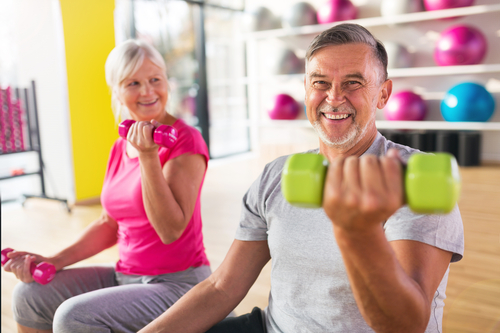Exercise is key to healthy living
Exercise is the best way to combat age-related muscle and bone loss, but that’s often not enough of a motivator to get adults moving. Over half of adults in the United States don’t get the recommended amounts of exercise they should, and nearly 30 percent of seniors are completely inactive, meaning the only movement they get is when performing activities of daily living.
As a young and even middle-aged adult, your senior years can feel far away. It’s easy to brush off the need to exercise regularly, thinking you can worry about it when you’re older — but healthy aging isn’t the only benefit of regular physical activity. Regular exercise can also help you live a more independent life as you age.
In 2016, Yale University School of Medicine studied 1,600 seniors who were, at the time, living sedentary lifestyles. For the study, half of these seniors began an exercise program that included walking, strength training and balance exercises. Over the course of three and a half years, the seniors who exercised regularly reduced their risk for age-related injuries and disabilities by an average of 25 percent.
Likewise, researchers have found that exercise can reduce cognitive decline. Moderate-intensity exercise has been shown to increase brain size in the areas responsible for thinking and memory; and slow, focused exercises like Tai Chi, yoga and martial arts have been shown to enhance cognitive functioning in older adults. Based on this research, Bridges by EPOCH at Pembroke began a bowling club to keep residents active while using controlled, precise movements that help engage the brain.
Since much of these findings point to different types of exercise, it’s important adults incorporate multiple forms of physical activity into their daily lives. The Centers for Disease Control and Prevention recommends adults get 150 minutes of moderate aerobic activity, or 75 minutes of intense aerobic activity, a week. The CDC also recommends adults perform strengthening movements twice a week that involve all major muscle groups.
Moderate aerobic exercise includes activities like brisk walking, hiking or swimming, and intense aerobic exercise includes activities like running or dancing. While the CDC’s guidelines dictate how intense your workouts should be, the main goal is to get moving. After all, any exercise is better than no exercise.
If you don’t live near a gym or can’t afford a membership, pick aerobic activities you can step right out your door and do, such as walking, running, biking or hiking. Even strengthening movements can be done outside of a gym. For example, push-ups, squats, sit-ups and lunges can be done using only your bodyweight in the comfort of your own home.
When getting started, you should also look for ways to incorporate short bouts of activity throughout your day. Taking the stairs instead of the elevator, walking around while on a phone call and parking farther away in parking lots are simple measures you can take as you work to get move active.
Exercise is key to living a healthy life, and staying active will ensure that you get to keep enjoying a healthy life as you age. While you should strive to maintain a regular exercise routine, start by taking simple measures to incorporate more movement into your day. Before you know it, you’ll be well on your way to achieving your weekly goal.

